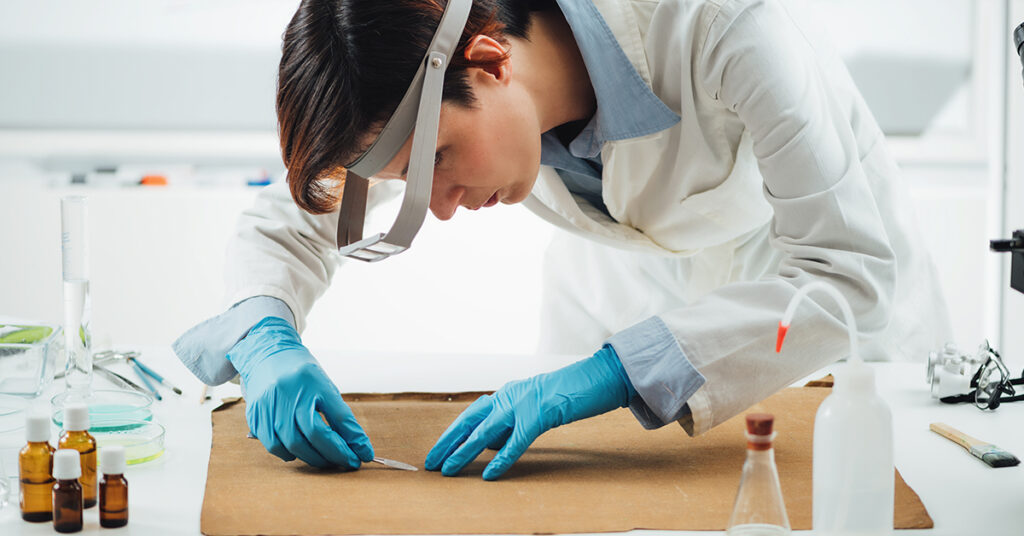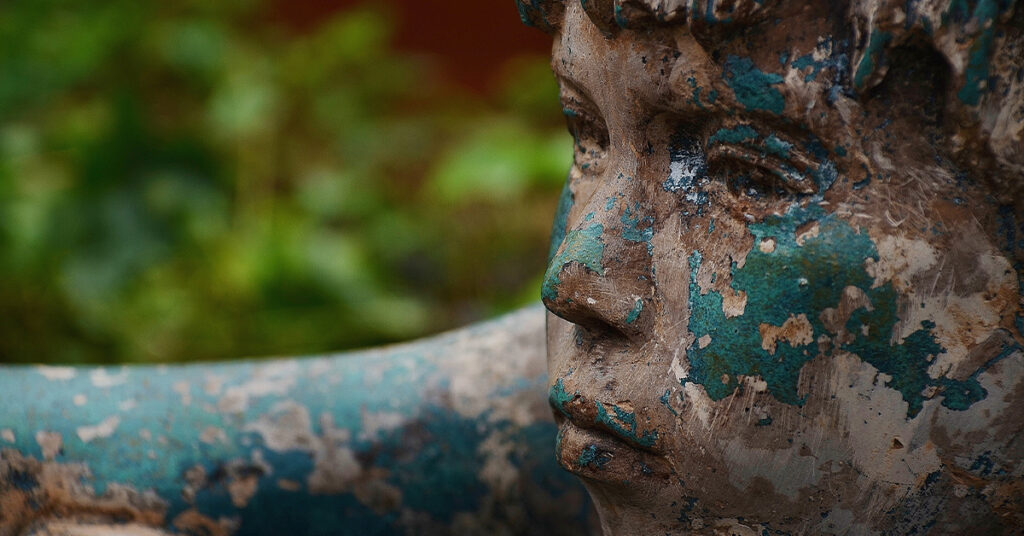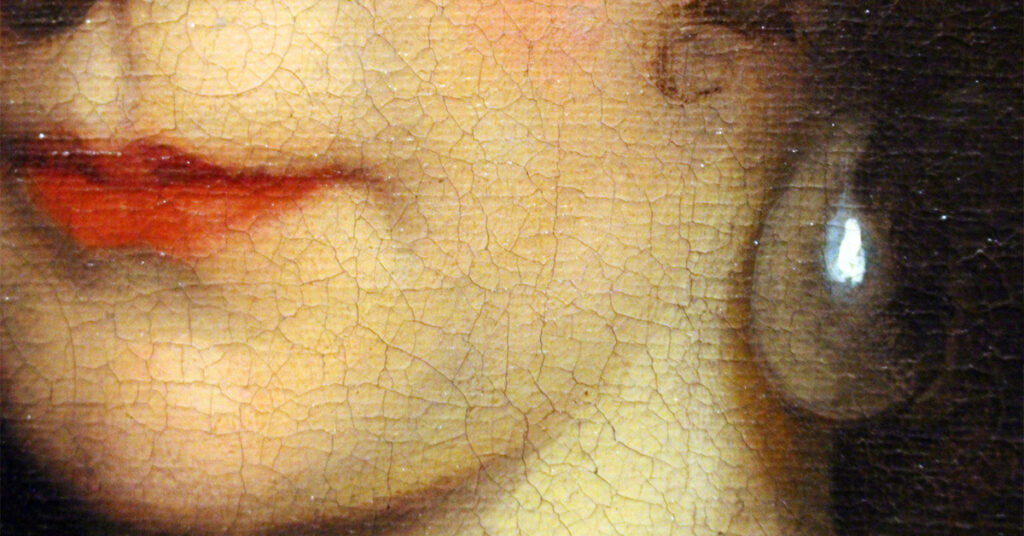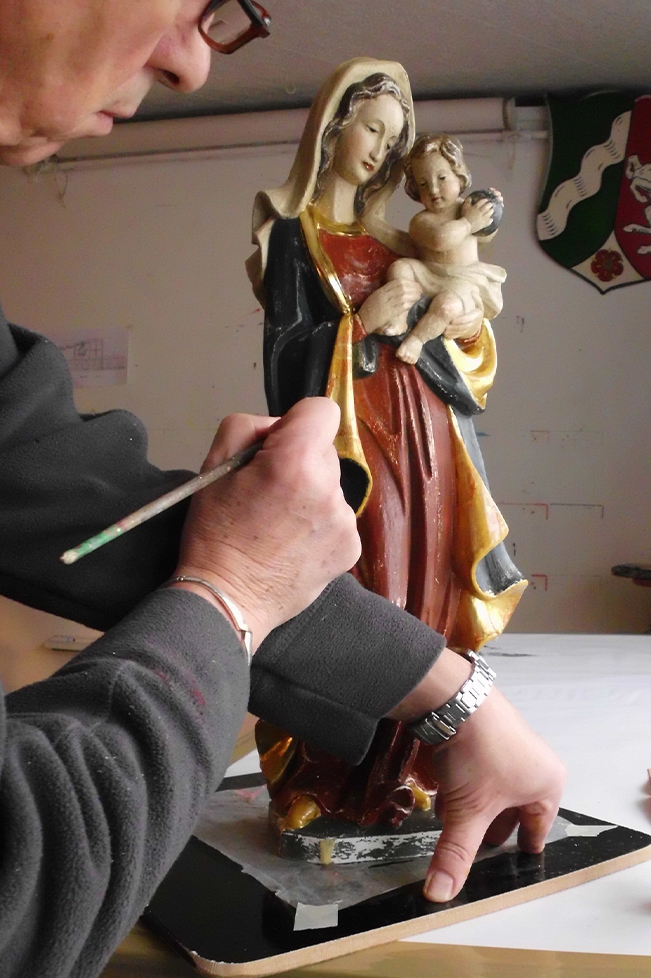
Appraisers Expect Condition Issues, You Should Too
One of the difficult challenges when valuing artwork is taking into consideration the level of condition issues. And how that reflects on the monetary value. During the preliminary conversation with most clients, one of the most common dialogues is that they have had the artwork in the family for many years. The client expresses that the work was always hung in the home and is in “perfect” condition. Although one would think this to be true, if a piece does not get moved around.
This is in fact very seldom the case. Even in the best environments, all artwork naturally ages. Over time physical deterioration becomes more prevalent. Even before seeing it in person, we are expecting to find some conditions issues. Most may need to be addressed by a conservator for stabilization/restoration.
Visit this article by the Philadelphia Museum of Art to learn more about conservation.
Most Common Condition Issues
In the world of art, there are a vast array of mediums used and foundations on which that medium is placed upon. In any of these aspects, the condition issues that naturally come into play will prevail over the years. There are some combinations that tend to be less susceptible than others such as oil paint on wood panel vs watercolor on paper. But no matter the medium and foundation, they all have their antagonist and over time they will begin to take hold. It’s not just flat art that is susceptible. All artworks such as sculpture, textiles, porcelains, and wood carvings just to name a few. However, we will focus on the flat art in this article as this is the most collective style of artwork seen in private collections.

Improper Framing
The most common elements we see are the effects of improper framing. Until about 30 years ago, archival framing materials just did not exist on the open market.
So, prior to the creation of archival resources, pieces were generally framed with paper matboards, cardboard backing panels, and regular glass. These sorts of materials are riddled with acidity. Acidity that inherently builds up within the material itself and ends up leaching into the artwork without your knowledge.
A perfect example is what’s called acid-burn. This is a browning of the paper which not only discolors the paper but also makes it brittle and unstable. The longer this is not addressed the worse it gets. In many cases, a client is not aware of this issue until we point it out and. Once the frame is removed, they are shocked at what was going on behind the visual area.
With regular glass, there is no protection offered whatsoever, unlike the museum glass accessible today. We use the comparison to wearing SPF vs not wearing SPF. With regular glass, any sunlight, even if indirect, permits the UV rays to fade/discolor the image.
The difficult aspect of this is as a client who looks at the artwork on a daily basis. This fading is not readily apparent because it is viewed in small progression. But if you were to compare the artwork with its former self side-by-side, this damage would become very evident.
Natural Aging and Environmental Aspects
Framing concerns are most common with works on paper such as lithographs, serigraphs, intaglios, and watercolors. But other sorts of mediums are just as susceptible to other conditions.
With oil paint, we see a range of issues that are either brought on by age. Such as yellowing of the varnish, surface layer buildup, cracqueleur (spiderweb-style cracking throughout areas or the entire piece), tenting/flaking of the paint, stretcher shadow, and warping, among many others.
These condition issues can happen gradually over time. Or happen much quicker based on the display areas temperatures, humidity, lighting elements, etc. Many of these problems if caught in time can be restored or stabilized. But if left unattended may cause irreversible damage and decreased values.

What Does The Appraiser Consider?
As an appraiser, we need to address all aspects that may be going on within that piece. We take in consideration the level of damage and level of conservation that will likely need to take place. It is impossible as an appraiser to know for certainty what the final restoration outcome will be until it is completed.
So, in general practice, we create an appraisal citing the value in the “current state” of condition. Then after any restoration work has been completed, we revisit the piece to create a “post-restoration” appraisal. In many cases, the value will go up after the conservation has been completed. But unfortunately, this is not always guaranteed. Sometimes the level of work needing to be completed may just stabilize the work, but the damage was so severe that the visual aspects could not be reversed.
Although uncommon, you may spend quite a bit to have this service done but not recoup this cost in the monetary value. With works of sentimental or historical importance, maintaining the integrity of the piece to the best of your ability is the sometimes the best outcome possible.

Conserving Your Artwork for Future Generations
As appraisers, we try to guide a client with all of these elements and will supply you with a list of conservators to engage for further advise.
We understand that discovering these issues may be a bit disheartening after years of taking care of a piece and assuming everything was ok, but very seldom is it too late to turn-back-time. If you do need to have a piece restored, the initial process may be the most in-depth but after that you may only require “general maintenance” every 20-30 years. The long-term benefits of having this done may allow the artwork to last for generations to come.
Authored by:
Kelly Knoll, ISA CAPP
President/CEO – Heritage Appraisals LLC. Learn more about Kelly, here.